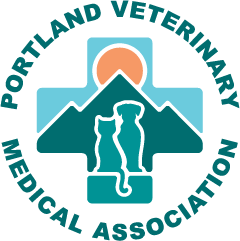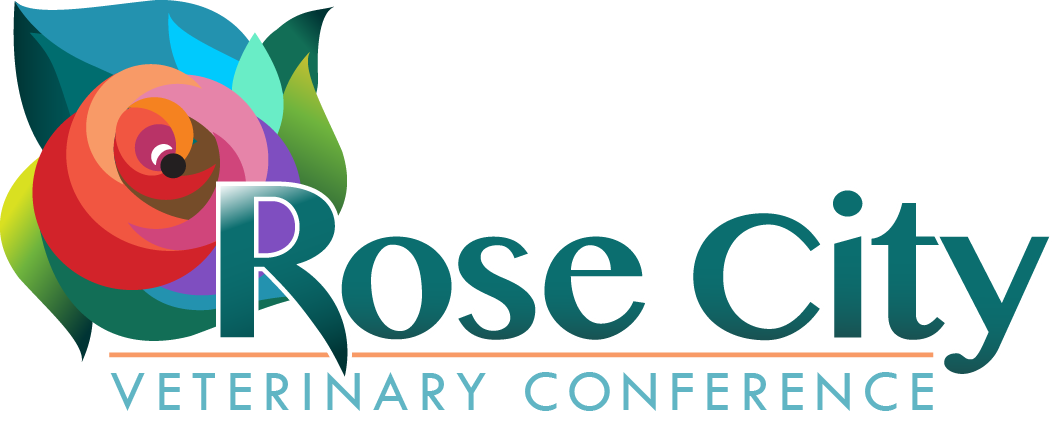
Rose City Veterinary Conference
Sunday, April 6th
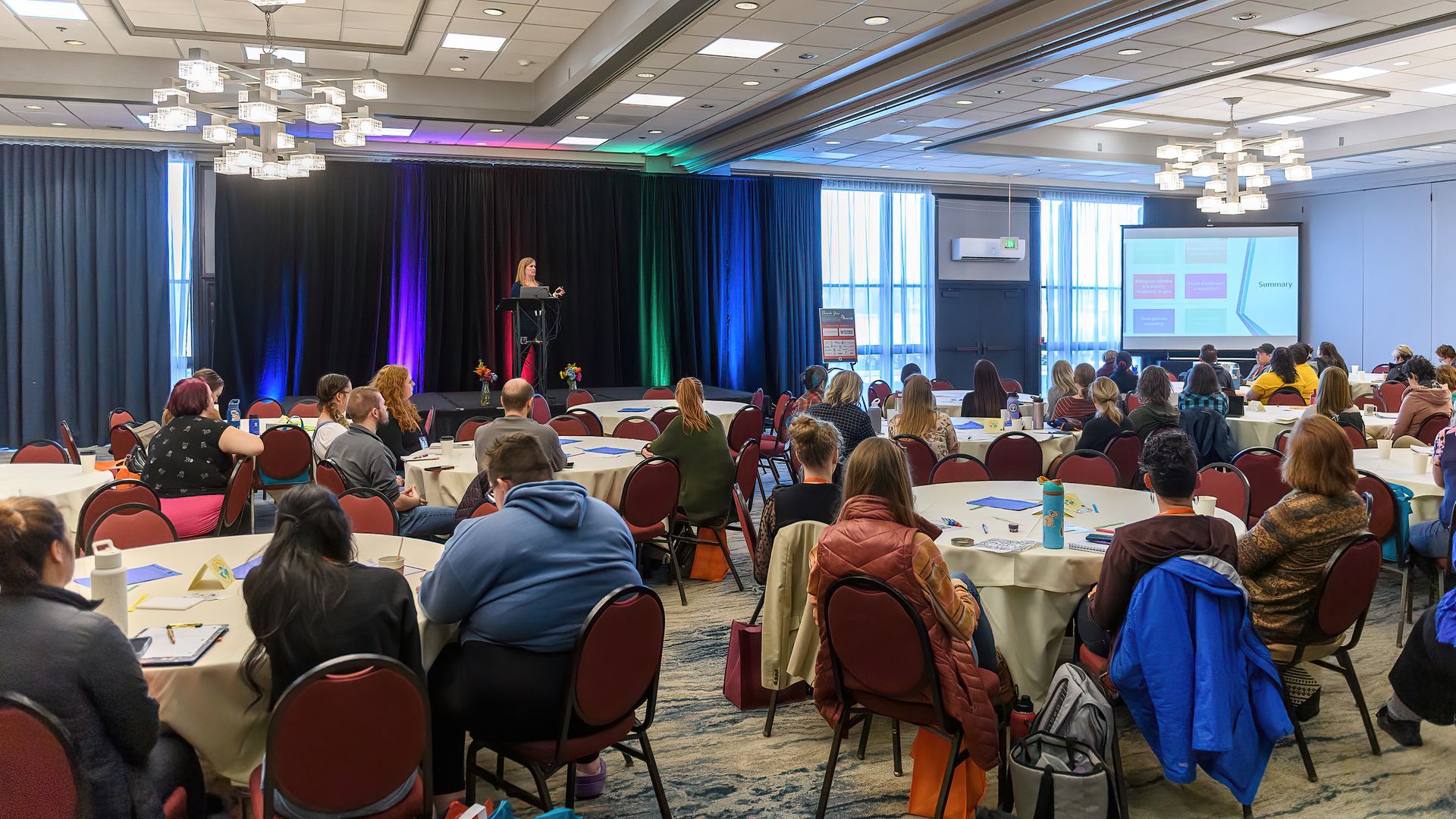
Slide title
Write your caption hereButton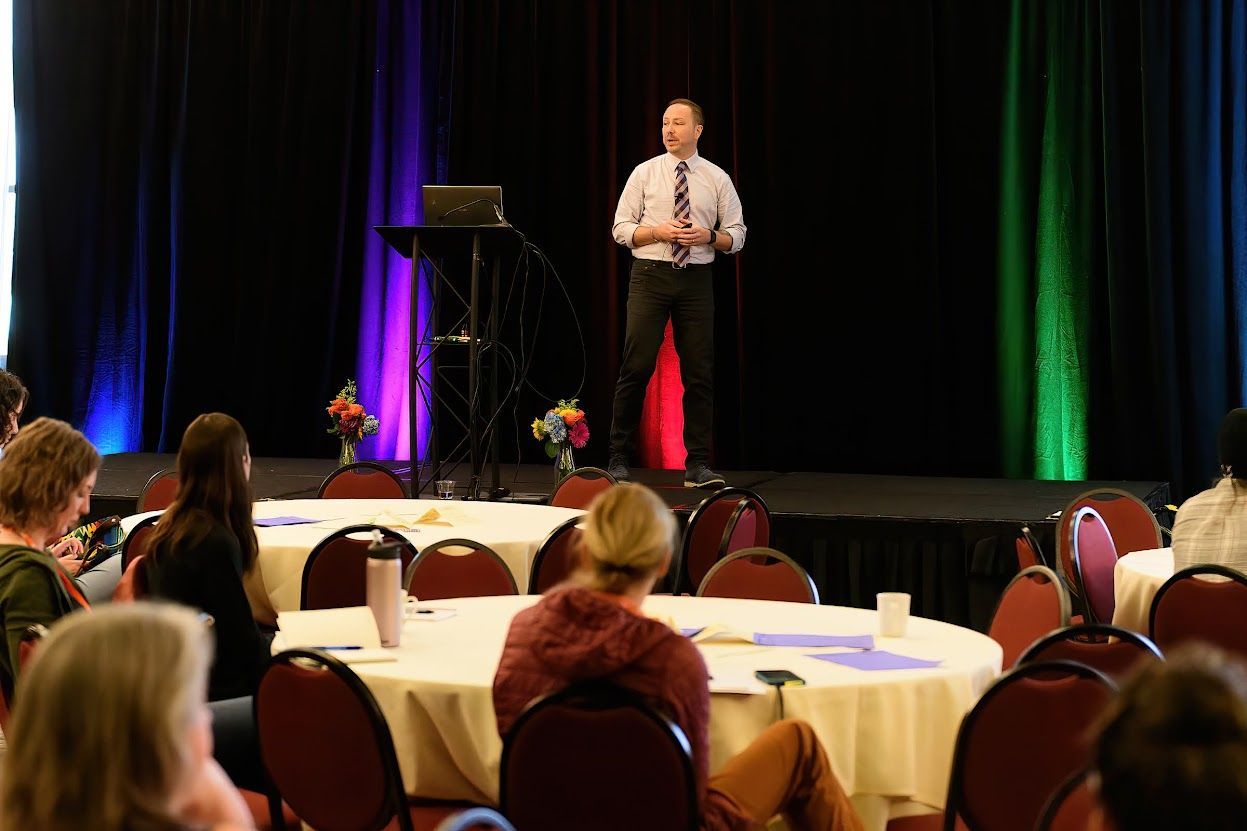
Slide title
Write your caption hereButton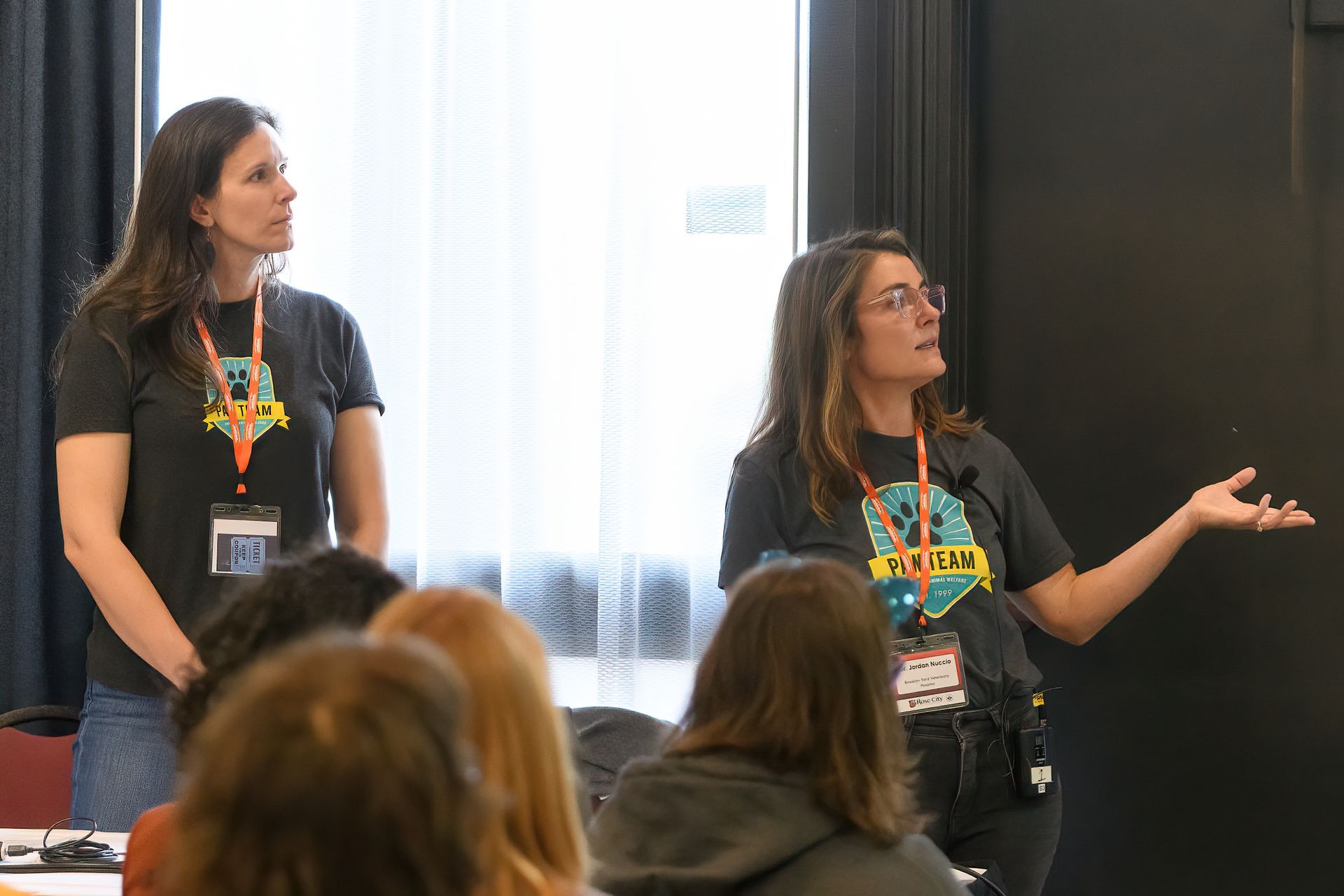
Slide title
Write your caption hereButton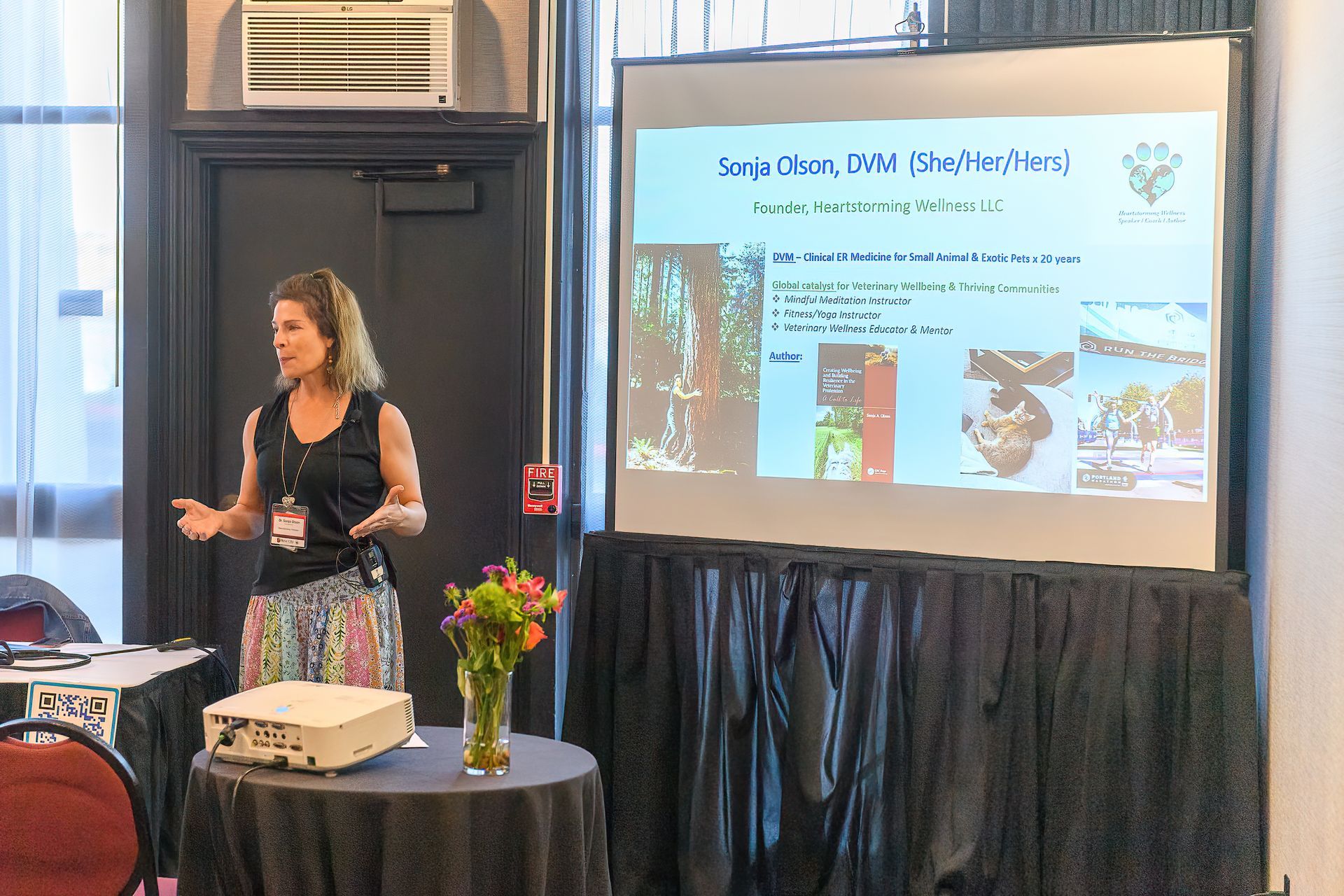
Slide title
Write your caption hereButton
Slide title
Write your caption hereButton
Presentations
Write your caption hereButton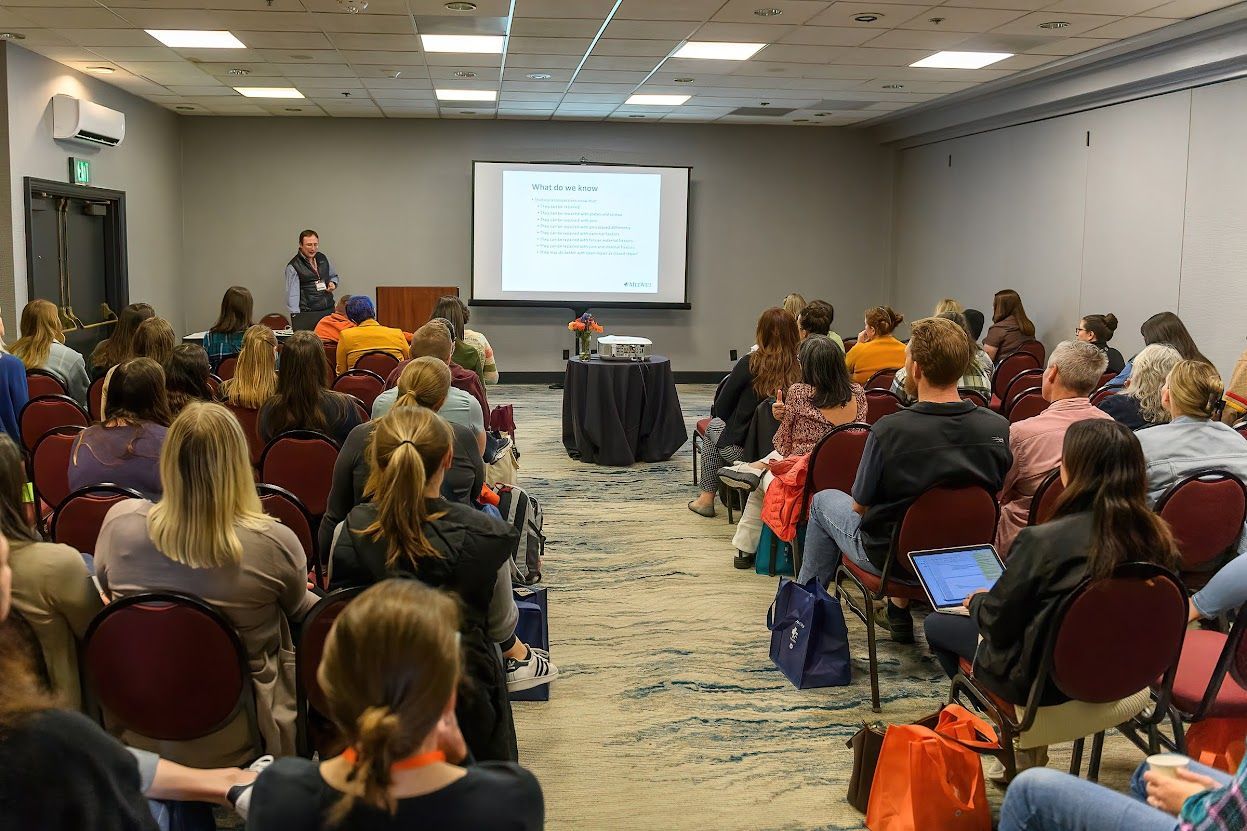
Slide title
Write your caption hereButton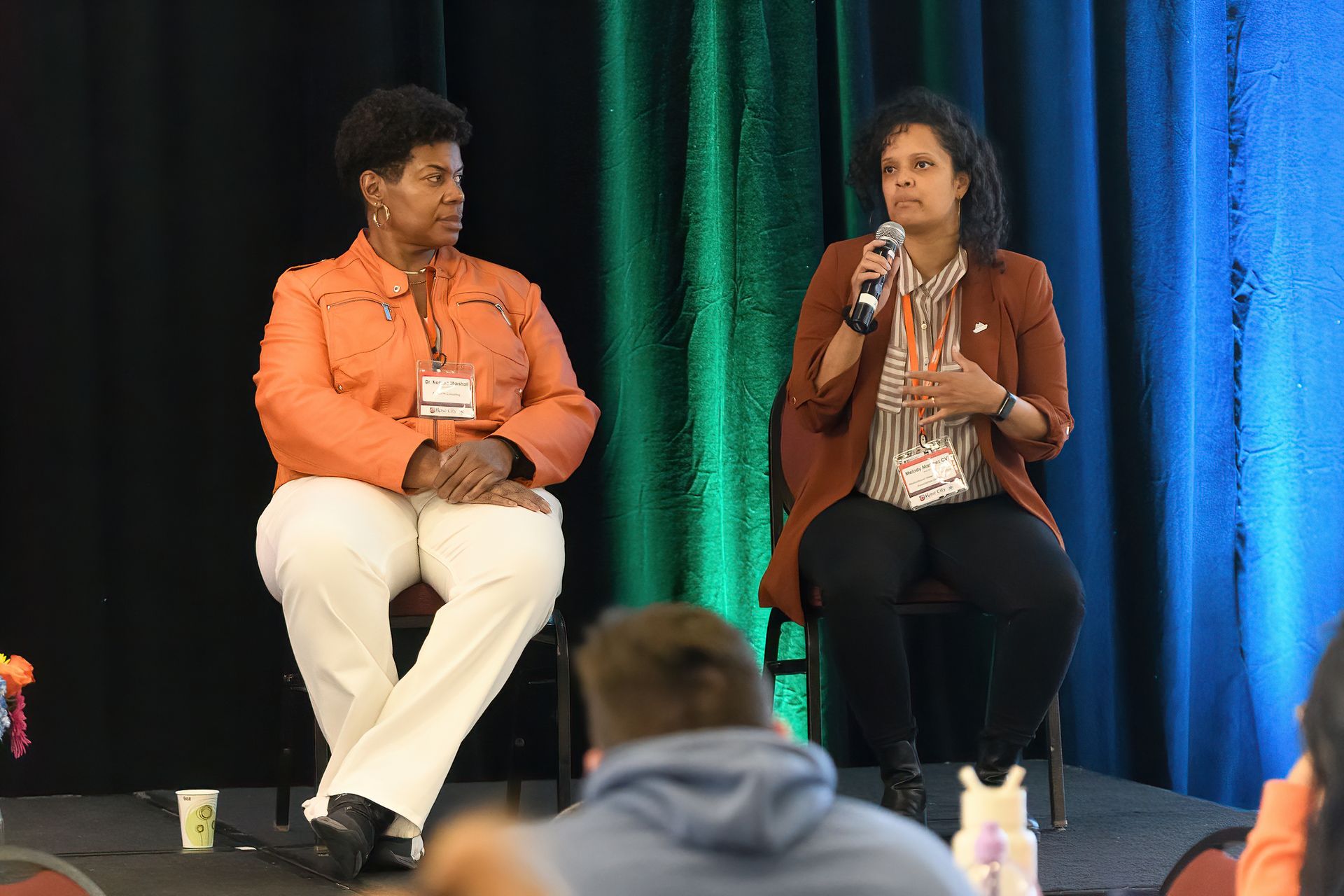
Slide title
Write your caption hereButton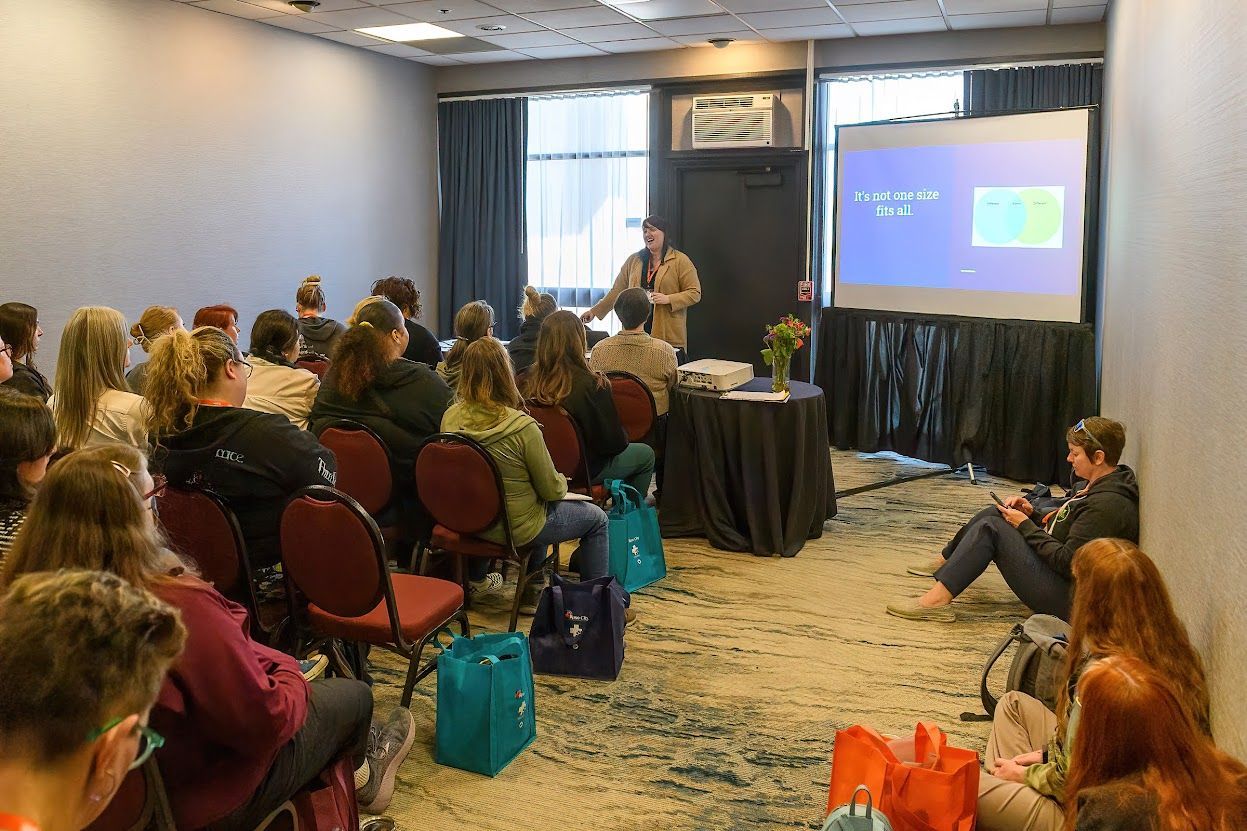
Slide title
Write your caption hereButton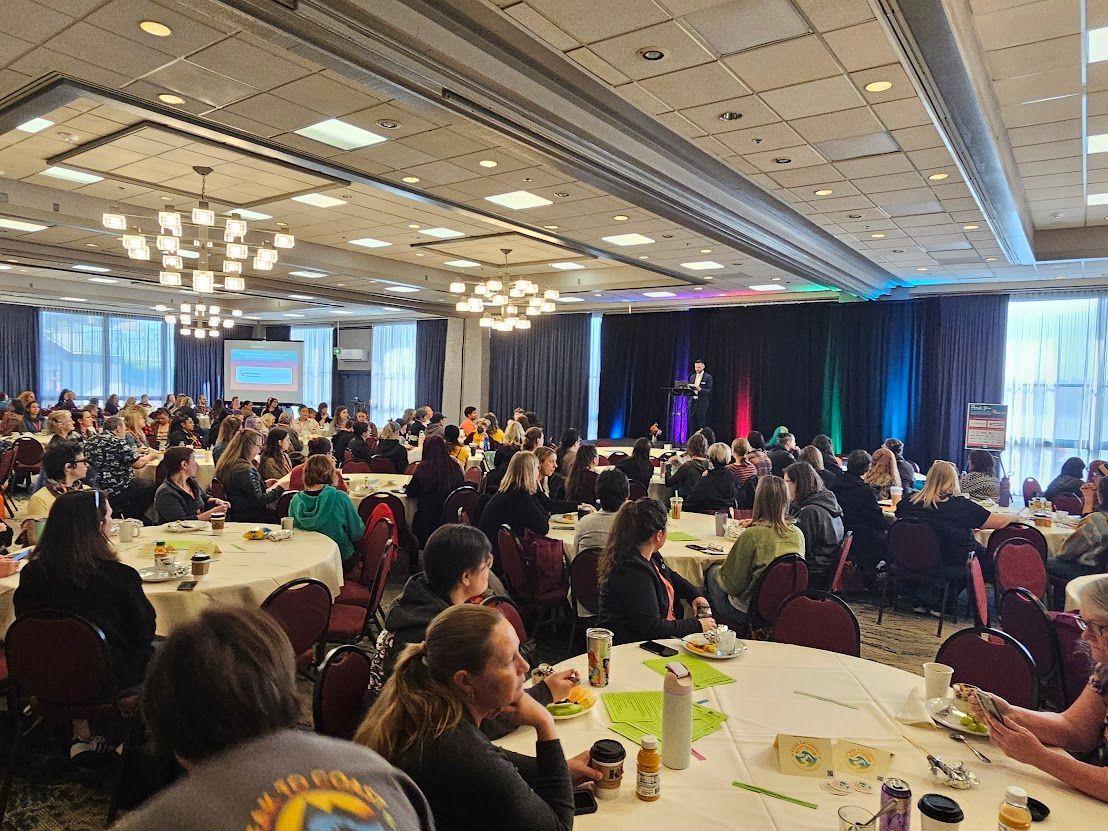
Slide title
Write your caption hereButton
There will be six learning spaces with sessions running concurrently, throughout the day, with the the exception of the opening session. Rather than 'tracks' limited to roles, we encourage all veterinary professionals to attend the sessions that interest them.
We ask that all attendees and presenters help create a sense of welcome and belonging in every space. All sessions will be recorded, so please choose your own adventure for the day, knowing you will have access to the recordings for all others, shortly after the conference.
Conference Program
Featured Presenter Sessions | Dr. Jody Lulich
Turning Trauma into Triumph | 8:15-9:15am
Opening Session
The most difficult period in our lives may be a blessing in disguise. We will explore trauma using my book, In the Company of Grace to reveal a path to resiliency and veterinary medicine. Audience participation is encouraged to develop ways to develop your own coping strategies
The S.A.F.E. method for unobstructing the feline urethra | 9:25-10:15am
To avoid common mistakes when unobstructing the feline urethra, we use the acronym, S.A.F.E. to remind us of the important steps (Stabilize first, Accurate diagnosis, Flush don’t force, and Extend the urethral caudally) to safely and effectively unobstruct the urethra of male cats. This seminar will present concepts in an interactive, case-based format with practical demonstrations to insure proper diagnosis and treatment of the obstructed cat.
Using the urinalysis to diagnose non-urinary tract diseases | 1:30-2:30pm
The urinalysis is a quick, simple, and useful test to assist in the localization and diagnosis of urinary and systemic diseases. However, it is often underutilized, and sometimes abandoned. Understand the significance of glycosuria in a dog with liver disease, kidney disease, and pancreatic disease. Recognize the significance of paradoxical aciduria in a vomiting dog. Know when red urine is an indicator of non-urinary disease.
Urinary Case Challenges | 2:45-3:45pm
A variety of urinary diseases will be presented to challenge the audience to efficiently diagnose and appropriately treat. This case based seminar will entertain and enlighten.
Medicine-Focused Sessions
Canine Hip Dysplasia: Radiographic Review and Candidacy for Total Hip Replacement | 9:25-10:15am
Jose Carvajal DVM, MS, Diplomate ACVS (Small Animal)
ACVS Fellow (Joint Replacement Surgery)
An overview of exam and radiographic tips, which patients should be referred/what is a good time for referral, and updates on treatment options. Additionally, sharing of cool and challenging surgical cases that may highlight our ability to offer total joint replacement to a growing number of patients that previously would not have been good candidates.
Pandora's Box or Paradigm Shift– Staging Dentistry | 9:25-10:15am
Kevin S. Stepaniuk, B.Sc., DVM, FAVD, DAVDC (he/him)
Board-Certified Veterinary Dentist
Current paradigm challenges include recognition of significant additional dental pathology identified with intraoral radiographs and “dental cleanings” leading to financial and
communication trust issues with clients. As well as the surprises resulting in delivery of care and service conflicts in a busy practice schedule. The lecture reviews challenges to patient care, staff wellness, doctor wellness, decision fatigue, internal customer service, and external customer service.
FIP: It's Not a Death Sentence | 9:25-10:15am
Yvonne Brandenburg, CVT, RVT, VTS (Internal Medicine - Small Animal)
Feline Infectious Peritonitis, or FIP, has historically been a terminal diagnosis. A novel treatment that inhibits the replication of the FIP virus has been shown to treat and get cats into remission. We will discuss the history of GS-441524, where treatment is currently, and where it is headed.
ECC Potpourri: How to be your own Criticalist when they won't refer! | 10:30-11:20am
Hannah Marshall DVM, DACVECC (she/her)
This presentation will be geared at the emergency that walks in your door and owners choose not to pursue specialty care. This presentation will be a quick snippet high case volume choose your own adventure approach, allowing at least 15-20 emergency topics to be addressed, ranging from acute trauma to shock and beyond. The case selection will be geared at those where unique and/or low cost approaches may be considered, with patient care and appropriate owner support at the forefront. Audience participation in case selection will be supported through text surveys during the presentation.
"Make Fluffy stop doing this!" Addressing cat behavior concerns in the clinic | 10:30-11:20am

Kat Pankratz, DVM, DACVB (she/her)
Owners look to various sources for treatment of their cat’s behavior problems, including looking towards veterinary clinicians for advice. Veterinarians can play a critical role to improve patient welfare and mend the human-animal bond. Through owner education, prevention and early diagnosis and intervention, veterinarians can help keep the cat in the home and as a patient for years to come.
- Learn how to answer "doorknob conversations" about cat behavior
- Recognize behavior problems early to prevent escalation for likely better long-term outcome
- Follow the 3-M's approach to formulate a triage and treatment plan for behavior problems
CRIs? No need to cry! | 10:30-11:20am
Erin D. Glover, PhD, MS-MTCH, CVT (she/they)
In this interactive workshop, attendees will be lead by an enthusiastic and engaging mathematics educator, CVT, and current DVM student who will provide a welcoming and non-judgmental atmosphere to learn best practices for CRI and other complex drug calculations that can arise in practice. While this presentation is open to all attendees, it is thoughtfully designed for practicing technicians, technician students and DVM students. In this session, attendees will be presented with a rationale for understanding why we need to know drug calculations by hand without relying solely on online calculators), a framework for organizing the information given (e.g., doctors orders for CRI) and a method for calculating drug doses for single and multi-drug CRIs.
An interactive part of the presentation may include a small-group practice problem in which the doctor's orders include drug units and/or drug concentration units that do not align with the required units of an online drug calculator - which provides a real-life rationale for understanding how to approach CRIs flexibly, with or without an online calculator as a tool.
Depending on the allotted time, additional problem types can be incorporated. Ideas include:
- Adding in an appropriate number of mEq of KCl into a fluid bag and how to adjust to appropriate therapeutic levels or safety margins.
- Using 2 methods for calculating CRI’s: Algorithm vs. Dimensional analysis and comparisons between the “safety” of the methods with respect to potentials for medical errors.
- Adjusting CRI after delivery has begun.
Oh no, alien in my cat's ear canal- what to do? | 10:30-11:20am
Sonja Zabel
BOARD CERTIFIED VETERINARY DERMATOLOGIST®
(she/ her)
This lecture will address aural inflammatory polyps, focussing on different treatment options, how to prepare for the referral as well as care after removal.
Not Just a Dental: Navigating Patient Comorbidities During Dental Anesthesia | 11:40am-12:30pm
Nicole Shuey BS, CVT, LVT, VTS (Anesthesia & Analgesia) (she/her)
This lecture discusses common misconceptions about dental procedures being "safe" as non-invasive or less invasive procedures. It reviews common patient comorbidities and how to manage tricky anesthetic cases, especially in older or compromised patients. It also evaluates pain management for dental procedures and why it is important to consider pain management as part of a balanced anesthetic protocol.
Beyond The Disc Herniation: Identifying Other Neurologic Conditions Requiring Neurosurgical Intervention | 11:40am-12:30pm
Joe Kowal, DVM, DACVIM (Neurology)
When thinking of neurosurgery, our most common procedures, those used to treat intervertebral disc herniations, readily come to mind. There are a variety of other neurologic conditions involving the spine and brain which may have surgery as the optimal treatment strategy. This lecture will explore identification and neurosurgical treatment of other conditions such as subarachnoid diverticula, hydrocephalus, congenital spinal malformations, constrictive myelopathy, and neoplasia.
Hospice Care for Companion Animals: What it Isn’t | 11:40am-12:30pm
Heather Poncelow, DVM, CVMA
(she/her)
This presentation will be a broad overview of veterinary hospice and palliative care, approached through common questions and misconceptions.
Let the Beat Drop: Perioperative Arrhythmia Management | 1:30-2:30pm

Nicole Shuey BS, CVT, LVT, VTS (Anesthesia & Analgesia) (she/her)
This is an intermediate lecture with information on cardiac physiology and common arrhythmias in anesthetized patients. There will be case based evaluation of ECG rhythms and discussion on the questions that anesthetists should ask themselves to help determine what type of arrhythmia is present. Precipitating factors, common manifestations, and treatment recommendations for perioperative arrhythmias will also be discussed.
Rabbit Gastrointestinal Syndrome | 1:30-2:30pm
Kelly Flaminio DVM
One of the most common emergent presenting complaints in client-owned domestic rabbits are clinical signs associated with the digestive system including: alterations in food intake progressing to complete anorexia, decreased or absent fecal production, abnormal fecal appearance, bruxism, and abdominal pain. Previously, this presentation was referred to as gastrointestinal stasis, however the term rabbit gastrointestinal syndrome (RGIS) has been suggested to more adequately describe complex clinical signs and pathological changes associated with the digestive system in rabbits.
Rabbits are small prey species, and thus hide signs associated with their disease for a longer period of time compared to dogs and cats. Therefore, when rabbits present with clinical signs associated with RGIS they require immediate assessment to determine stability and severity of disease. In this presentation we will discuss predispositions and etiologies leading to RGIS and cover the most current studies have investigated causation, diagnostic approaches, mortality rates, and treatment protocols to elevate RGIS care.
Updates in the Surgical Management of Oral Tumors | 1:30-2:30pm
Sarah Salyer, MS, DVM, DACVS-SA
ACVS Fellow, Surgical Oncology
This lecture will cover updates in the surgical management of oral tumors as well as the principles of maxillofacial reconstruction. We will review pertinent anatomy of the head and neck as well as the pre-operative staging including sentinel lymph node mapping and biopsy techniques. We will discuss mandibulectomy and maxillectomy, along with maxillofacial reconstruction. The lecture will also review the common canine and feline oral tumors and prognosis.
Learning Lasts Forever: Why You Should Include Proactive Pet Training Concepts Into Your Daily Practice- and How to Do It | 2:45-3:45pm
Nicole Froelich, DVM, FFCP-Elite, LSHC, Cat Friendly Vet (she/her)
and
Lorenzo JW Fox CCUI, FDM, SA Pro, Fear Free Certified (he/him)
The moment an animal steps into your practice, their brains and bodies are learning. The emotions they experience will inevitably drive their behavior for the rest of their lives- for better and for worse. Awareness of basic learning theory and the practice of simple yet proactive training strategies to reduce fear, anxiety, and stress can result in higher patient retention, safer visits for patients and staff, and better health outcomes. This talk will teach you to recognize and leverage trainable moments in daily practice to help our patients and their guardians feel more comfortable with veterinary handling and care. We will go over learning theory, introduce cooperative care, and delve into examples of how thinking like a trainer can help you to better serve your patients.
Open Wide, We’re Diving Deep into Tooth Resorption, Juvenile Gingivitis, and Stomatitis | 2:45-3:45pm
Renae White CVT, VTS- Dentistry
This feline-specific lecture will focus on feline tooth resorption, juvenile gingivitis, and stomatitis and the most current information out there about them. We will deep dive into the who’s, what’s, where’s, and why’s of each disease and swim through the overall goals when treating these patients.
Dirty blood? Clean that Crud! Extracorporeal therapy in the ER | 2:45-3:45pm
Beverly Thompson DVM, DACVECC (she/her)
Let’s evaluate the features of total plasma exchange and hemoperfusion. We will assess the toxins and diseases that can be treated with these therapies and help decipher when to refer. This discussion is meant to help educate when additional treatments through critical care and ER may be on the table and relieve some of the discomfort about having those discussions with owners prior to referral.
Initial Management and Treatment for Human-directed Feline Aggression | 4:00-4:30pm
Valli Parthasarathy PhD, DVM, DACVB
Board-Certified Veterinary Behaviorist (she/her)
Does your client's cat hiss, swat at or bite them? Feline aggression towards people can be stressful and often frightening to experience. During this presentation, we will explore common reasons for human-directed aggression, and initial management and treatment solutions to allow you to help clients quickly.
Exotic Radiography | 4:00-4:30pm
Jamie Michaelis CVT
Let’s work on getting ourselves familiar with how to take radiographs on all non-dog/non-cat species! In this lecture, we will go over how to safely obtain radiographs on all commonly seen exotic species, and how to safely restrain these patients and also decreasing our own radiation exposure.
Dystocia Managment | 4:00-4:30pm
Eleas M. Wu, DVM, MS, DACT
A dystocia, or difficult birth, is one of the most common reproductive emergencies seen in general practice. They can be extremely stressful for the owner, patient and veterinarian. Management of these cases can be performed medically, surgically or through a combination of both. The avenue of treatment is dependent on a variety of factors including breed, litter size, fetal viability, duration of labor, and age of the female. This presentation will focus on the clinical approach to patient evaluation, diagnostics and methods of treatment.
Maybe I shunt have ignored that high ALT: Diagnosis and Treatment of Portovascular Anomalies | 4:00-5:00pm
Jason Reeder DVM, DACVIM (SAIM)
Gretechen Kuchenmeister DVM
We will review the differential diagnoses of hepatopathies in dogs with a focus on congenital portovascular anomalies. Using case examples, we will explore new techniques in the diagnosis, medical management and definitive treatment of these challenging cases.
Canine Degenerative Lumbosacral Stenosis: Presentation, Diagnosis, and Management Strategies | 4:30-5:00pm
Joe Kowal, DVM, DACVIM (Neurology)
Lumbosacral stenosis is a common condition which can affect a variety of breeds. This lecture will explore common presenting signs, breed predilections, diagnosis, and treatment strategies (both medical and surgical) of canine degenerative lumbosacral stenosis.
Avian Venipuncture | 4:30-5:00pm
Jamie Michaelis CVT
Want to learn where to draw blood on avian patients? In this lecture we will be reviewing the 3 most common veins used for blood draw/IV catheter placement in the avian patient, and the best way to safely restrain the patient to obtain venous access. Bird ownership has increased drastically in the Portland/Metro area, not just with the parrot (Psittacine) species but with waterfowl/poultry birds as well, this lecture will hopefully make you feel more comfortable in your venipuncture skills in these avian patients.
Choose Wisely- Demystifying Prescribing Decisions | 4:30-5:00pm
Christopher Pachel, DVM, DACVB, CABC (IAABC) (he/him)
Unravel the complexities of prescribing decisions in veterinary behavioral medicine with Dr. Christopher Pachel, a board-certified veterinary behaviorist. This insightful presentation equips veterinary professionals with practical frameworks to evaluate and select pharmacological interventions tailored to each patient’s unique needs.
Join us as we explore:
• Key questions to determine if medication is indicated.
• Decision-making strategies for maintenance vs. situational therapies—or both.
• In-depth comparisons of commonly used medications, including SSRIs, TCAs, and situational anxiolytics.
• Tips for medication trials, transitions, and customizing dosing recommendations.
Whether your goal is to minimize over-threshold “big feelings” or maximize behavior modification outcomes, this session provides actionable guidance to support your patients effectively.
Take the guesswork out of prescribing decisions and deliver more impactful patient care!
Tubes are for Techs
Sarah Harris CVT, VTS (ECC) (she/her)
This will be an interactiove discuss about utilizing technicians for the placement and maintenance of advanced lines. Examples of tubes being discusses will be available to pass around..
Change Sessions- Access to Care | Equity, Diversity & Inclusion
For the Benefit to Society: Increasing Access to Veterinary Care as a Social Justice Movement | 9:25-10:15am
Jordan Nuccio DVM, CVA
Jordan Sanchez-Elliott RVT
Nikki Graff DVM, CVA
For the Benefit to Society: Increasing Access to Veterinary Care as a Social Justice Movement Veterinary medicine has become increasingly cost-prohibitive for large portions of our population, creating a moral dilemma for practitioners and distress to support staff and clients alike. We would like to share our perspective on this growing problem and offer insights and strategies to increase access to care within your own clinical practice. Presenters will: - discuss PAW Team’s approach to an incremental care model and provide case examples which demonstrate a spectrum of care that considers contextual factors to allow for optimal outcomes - demonstrate the impact of minor interventions by local practices, especially in regards to relinquishment and euthanasia rates, leading to reduced moral distress and promotion of well-being & satisfaction for clinicians and staff - share clinical hacks to help reduce costs for clients & clinics - discuss liability concerns and legal implications of these models
What You Water Grows: Cultivating A Culture of Care | 10:30-11:20am
Melody Martinez CVT (she/ella)
Care is an essential and practical way to create belonging. At some point in our lives, each one of us will need some form of care. Despite this, we live and work in a society that overvalues individualism and where cultural messages reinforce that the solution to our needs resides within each individual in the form of self-care. As a result, we are left to manage life’s big changes in isolation of a community – our workplace – often most available or accessible to us. What can the histories of marginalized groups and the principle of “community care” teach us about how to promote well-being for our workplace community? How can we transform the support systems already available to us at work to encourage an ethos of trauma-informed collective care? In this session, we’ll discuss what it takes to create and cultivate caring cultures and how collective care translates to increased well-being for our teams, recruitment and retention of staff and clients, and tangible diversity, equity, and inclusion outcomes.
Access to Care: What are we doing about it in Portland? | 11:40am-12:30pm
Stephen C Kochis DVM
he/him
Chief Medical Officer, Oregon Humane Society
and
Kelly Bremken
she/her
Social Worker, Oregon Humane Society
This session reviews the opening of the Oregon Humane Society’s Community Veterinary Hospital in 2022, focusing on what we have learned about the needs of the Portland pet community and our future plans in a one-health approach to the intersection of veterinary medicine and the human animal bond.
The Practice Manager and Owner's Guide to Hiring for Equity and Inclusion | 11:40am-12:30pm
Melody Martinez CVT (she/ella)
The veterinary profession is among the least racially diverse in the country, particularly among veterinarians but also among support staff. Many veterinary practices acknowledge this problem and are looking to diversify their teams, but don’t know where to start. In this session, we’ll discuss methods for recruiting and retaining racially diverse staff, including strategies for improving job listings, creating an equitable application review process, conducting honest and open interviews, and building a safer work culture for prospective employees of color. Tips and practices shared in this session will be broadly applicable to other marginalized groups.
Access to Care in Veterinary Medicine: Current understanding and important impacts on veterinary practices and caregiving teams | 1:30-2:30pm
Katie Kuehl DVM
and
Sonja Olson DVM (she/her/hers) Founder of Heartstorming Wellness LLC
Goal 1: Define concepts generally around access to care and spectrum of care to level-set language and knowledge for audience
Goal 2: Share available strategies to be proactive in preparing veterinary caregiving teams before/during/after the associated distress that can occur around these interrelated concerns and issues.
What participants will leave with:
Introduce and give context and numbers to access to care (especially regionally in PNW)
Linking to knowledge on moral distress and the impacts that it has on the team
Quantitative information/data on access to care generally and in veterinary medicine
Recognizing the problem and now what do with it for individuals and for teams - preparation and sharing of resources
Preparation for the 'what's next' -> keep conversations moving with veterinary caregiving teams, pet-owning community, and veterinary organizations.
Contextualized Care and Family Quality of Life: Moving beyond a “gold standard” | 2:45-3:45pm
Stacy Montgomerie, DVM, CHPV
Katherine Earl, DVM, CVA, CVPP
Hannah Marshall, DVM, DACVECC
Debrah Lee, LCSW
Medical advancements, specialization, and the associated costs of diagnosis and treatment can cause frustration and discontent amongst veterinary professionals and the patients and families we care for, particularly in the presence of a “gold standard.” Through discussion of relevant cases, this panel will explore the role of contextualized care with consideration to family quality of life in navigating challenging cases and improving access to care in the face of limited resources.
Growth Sessions- Culture | Communication | Well-being | Technology
Sustainable Professional Satisfaction Using Job Crafting & Understanding "Bore-Out" vs "Burnout" | 9:25-10:15am
Sonja A Olson, DVM
she/her/hers
Founder of Heartstorming Wellness LLC
1. Job crafting is based on the idea that we can seek and create more meaning and satisfaction through our work. This concept is to examine our current role and work situation through a new perspective of flexibility and opportunity before deciding to leave the role, the organization, or the profession. Job crafting is a fairly new theory within organization psychology. In this employee-driven approach, this is where the employee takes an active role in exercising control and adjusting their jobs to better match their individual needs, skills, and motivations. I will provide the techniques and benefits of job crafting.
2. We have come to have a better understanding of burnout and why it's 'bad.' Fewer have heard of 'boreout', a related work-related phenomenon that is arguably just as pernicious and impactful on an individual's holistic wellbeing.
Knowing what boreout is, and being able to identify it in ourselves, is critical for tackling it. There are also actions both individuals and practices can take to alleviate it. Experts suggest that as we emerge into an evolving new world of work that prioritizes worker wellbeing, boreout could merit just as much attention as other workplace problems (such as caregiving professional psychosocial challenges and burnout.)
The Importance of Self-talk and Our Inner Critic | 10:30-11:20am
Kelly Bremken
she/her
Social Worker, Oregon Humane Society
The way we talk to ourselves matters. Let’s discuss the good, the bad and the wild ways we listen to our inner critic and while we can’t eliminate self-criticism, we can open a greater capacity for self- kindness and increase our resilience. Join us to turn your inner critic into inner guidance!
Your Lizard Brain: Overcoming Evolution for Better Communication | 11:40am-12:30pm
Gabe Sasse CVPM (she/her)
How to recognize when your "lizard brain" is telling you to fight or flee, and stop it from taking over your crucial conversations. We'll talk how feelings and needs impact your communication, and how to think rationally through your conversations with staff, clients, and even in your own personal life.
Healthy Practice Culture - Breaking the Cycle of Bystander Behavior and Toxicity in Veterinary Medicine | 1:30-2:30pm
Gabe Sasse CVPM (she/her)
Danny Rost CVT (he/him)
Kathi Berman DVM (she/her)
Workplace toxicity and bystander behavior can silently erode team morale, patient care, and overall clinic efficiency. This session will explore the root causes of workplace toxicity in veterinary medicine and provide actionable strategies to create a healthier, more supportive practice culture. Attendees will learn how to foster accountability, empower staff to speak up, and prioritize mental well-being. Through real-world examples and leadership insights, this presentation will equip veterinary professionals with the tools to break the cycle of toxicity and build a resilient, positive work environment.
Closing Generational Gaps: Client Communications and Training the Team | 2:45-3:45pm
Gabe Sasse CVPM (she/her)
Kathi Berman DVM (she/her)
With Gen Alpha starting to enter the workforce, we’ll work through the differences of six generations of pet owners and veterinary staff. You’ll hear from a doctor and manager perspective, and maybe we can finally answer the question plaguing teams- does anyone actually read the email?
The Future of Veterinary Care: Leveraging Technology to Attract DVMs & Improve Client Engagement | 4:00-5:00pm
Josiah Moses DVM
and
Kerie Edie
Introduction: Why Modernization Matters
• Brief history of veterinary practice management and its technological lag behind human medicine
• The impact of HIPAA on human medicine’s digital transition and what veterinary practices can learn
• Key benefits of technology adoption (efficiency, client satisfaction, better patient care)
- Moving Toward a Paper-Light and Paperless Practice
- Enhancing Client Interaction and Operational Efficiency
- Upgrading Practice Management Systems (PMS) & IT Infrastructure
- AI Scribing Platforms – More accurate medical records with minimal DVM input.
- Streamlining Payments & Revenue Management
- AI Integration for Better Diagnostics & Patient Care
Pre-Recorded Sessions
Recordings will be made available to registrants prior to the conference as part of the full package!
Updates and recommendations for anesthesia patient monitoring
Michael Lovasz DVM, MS, DACVAA
New recommendations from the American College of Veterinary Anesthesia and Analgesia (ACVAA ) focused on choosing the ideal team and equipment for monitoring veterinary patients.
An Illustrated History of Veterinary Medicine
Greg Bishop DVM
The Egyptians had hieroglyphs depicting veterinary care, ancient Indian kingdoms treated elephant fungal infections with turmeric, and the Chinese had an official class of "horse priests", all thousands of years before veterinary education became formalized. In this lecture, I'll encapsulate the progress of veterinary medicine from it's ancient roots to it's modern incarnation, which will help shed light on some of our professional inheritance. We'll delve into the transformation of veterinarians in the public image, from enablers of colonial expansion, to the shifting gender and consumer demographics we're still experiencing today.
BNP and YOU- Cardiac biomarkers in daily practice
Norah Sheehan DVM, DACVIM
she/her
A discussion of BNP as a cardiac biomarker and its application in clinical practice both as a screening and diagnostic tool. We will touch on the application of BNP in both canine and feline patients.
Free to be You and Me- Psychological Safety in Veterinary Medicine
Carl Winch BVMS, MRCVS
he/him
In order for teams to be most effective, team members need to be able to communicate, problem solve and bring their whole selves to work. This requires a level of psychological safety that builds an environment conducive to collaboration and innovation. Through this presentation, we will explore what psychological safety is, what it’s not and what can impact it. We’ll focus on psychological safety in the veterinary clinic and how it impacts retention, patient safety and general well-being of associates. We will also dive into how leaders can build or impact psychological safety as well as how to measure it within their team.
Thoracic Penetrating Trauma
EmaLee Blumhagen DVM, DACVS
she/her
- Initial patient stabilization/evaluation
- Initial wound evaluation - techniques and updates
- When is surgical intervention indicated and what does that mean?
- Bandaging and repair techniques
- Specific cases w/ photos
Palliative Care Strategies for the Cancer Patient
Stephanie Byrne DVM
This session will provide an overview of common cancers in dogs and cats, with an emphasis on treatment and monitoring strategies that can be utilized at home and in general practice. The aim is to highlight options for patients that can still enhance quality of life, while empowering owners to be active and present in their pets' hospice care.
Managing Seizures- For the General Practitioner
Dan Krull DVM, DACVIM
I will discuss if/when to treat seizures, what drugs to use, how to monitor patients and what labs are recommended, how to manage owner expectations, and add in tips/tricks and insight from a Neurologist.
The Lost Art of Urinalysis
Kat Bennett LVT, VTS (SAIM)
A comprehensive look at examining urine sediment and what the results tell us about our patient.
The Diagnosis and Treatment of Encephalopathies - For the General Practitioner
Beth Pastina DVM, DACVIM (Neuro)
She/her/hers

CONTACT
Portland Veterinary Medical Association
PO Box 6067
Portland, OR 97228
Mon-Fri 9:30 am-4:30 pm
(may vary due to evening meetings & events)
©2024 Portland Veterinary Medical Association
